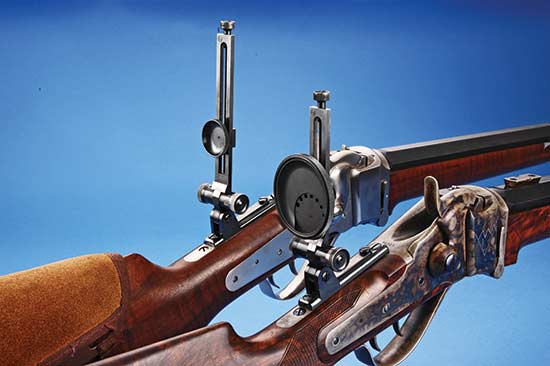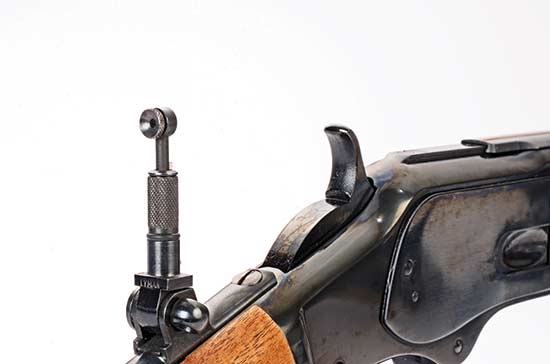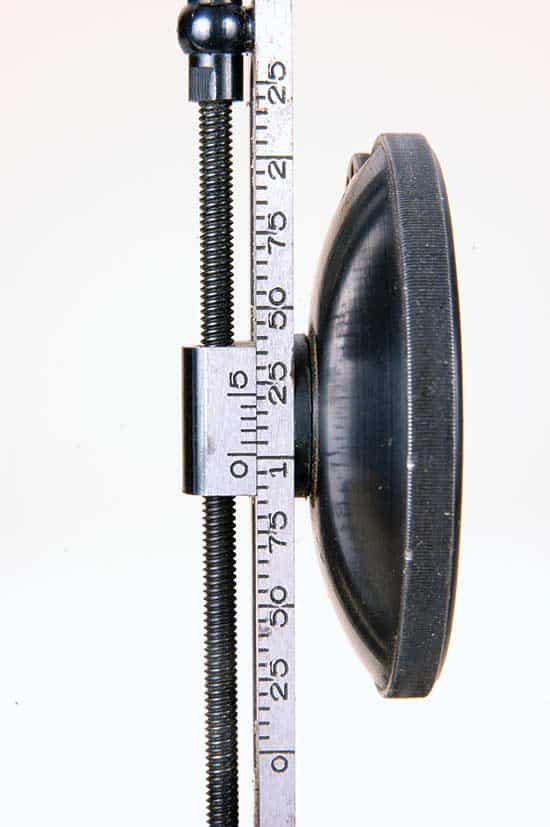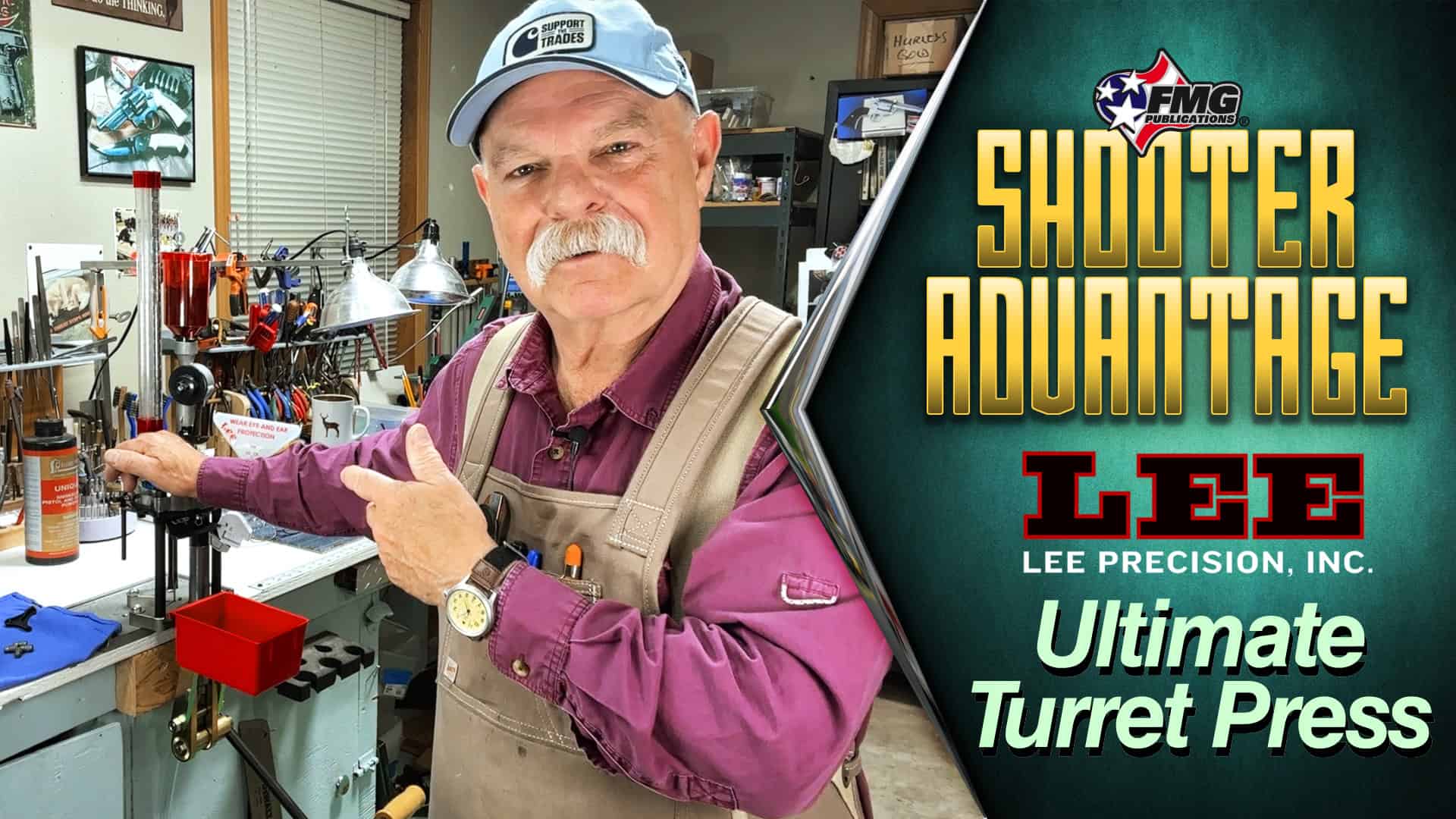Precision Peeps
Got ’Em? Need ’Em? Want ’Em? Good ... Because They Work!
If it were conveniently possible, I’d have peep sights on every rifle I own. Even if they’re already scoped. Peep sights are fast to use, capable of precision shooting, never fog up—and don’t have batteries.
Decades ago after climbing high on a Montana mountain, I could plainly see an elk’s head and neck about 50 yards away, but he was standing on the other side of a thicket. With my naked eyes it was easy to see. But when I brought my rifle to my shoulder the 4X scope magnified brush to the point the elk’s head was obscured. If the scope had been detachable and the rifle carried peep sights, perhaps I could have slipped a bullet through the brush and gotten meat that day. Or maybe not—brush shooting is tricky. But that incident proved to me a scope wasn’t the be-all and end-all to rifle shooting.
Like so many of the uninitiated in my early rifle-shooting years, it seemed peep sights were for close range. Never did I dream I’d eventually use them for target shooting all the way to 1,000 yards. In my first tries with peep sights, I set my targets at 50 yards. Now on my home range much of my peep-sighted rifle testing is done at 300.
What so many younger shooters don’t realize is peep sights need no concentration in hunting situations. Put the front sight on the animal and break a good shot and the event should be over. That’s because the human eye automatically centers the front sight through the rear aperture. I’ve taken a few dozen head of big game with peep-sighted rifles ranging from whitetail to 1-ton bison.
Ghost Rings
With a large aperture in the peep—sometimes called a “ghost ring”—and with a proper fitting rifle there is no need to obtain a sight picture. Bring the rifle to your shoulder and the front sight is right there—the rear can be ignored. On my sole hunting trip to Africa my guide was sorely disappointed to discover a scope-less rifle was my primary one. It was a Shiloh Sharps Model 1874 on which I’d grafted a vintage tang-mounted Ideal peep originally meant for leverguns. After making a couple of fast 1-shot kills on game that seemingly materialized in front of us, he relaxed. He even commented on how fast my rifle could be accurately fired.
Peep sights come in two basic varieties—hunting types and competition types. Typical of hunting peep sights are the tang-mounted ones found on vintage Winchesters or replicas thereof. These are mostly adjustable only for elevation. Windage is adjusted by drifting the front sight in its dovetail or by shimming the tang sight. After bolt actions became the norm for American hunters, receiver-mounted peep sights were invented. These have integral means by which they can be zeroed for elevation and windage but are not meant for quick changes. All these hunting peep sights are meant to be set for a specific range and then locked down.
Competition peep sights are much more complicated. The types I’ve used now for nigh on 40 years are also tang mounted and meant for black powder cartridge rifle (BPCR) events. However, they are called ladder types because they fold backwards to clear the rifle’s chamber for cleaning or fold forward in recoil so they don’t put a dent in the shooter’s head. These have graduations in 100ths of an inch. Some ladders are so short they are good only to about 200 yards and some so tall they can reach out a mile.
Vernier Scale
There are several different styles of competition tang-mounted sights but the type used almost exclusively by BPCR competitors are one brand or another of Soule sights. (That was the fellow who devised them back in the late 1800s). The advantage to Soule sights is the windage adjustment is in the base. Of course with very visible markings those changes are nearly perfectly repeatable.
To accompany a good competition tang peep sight, aperture front sights are necessary. These can take many forms from posts to apertures of varying sizes and with varying annulus. (That’s the ring containing the apertures.) First timers looking at a 500-meter target inside the front aperture with their eye to the rear peep will swear it’s impossible to hit. Actually, in decent wind and light conditions it is surprisingly easy to hit.
Peep sights can be that precise.
Read More Montana Musing Articles







